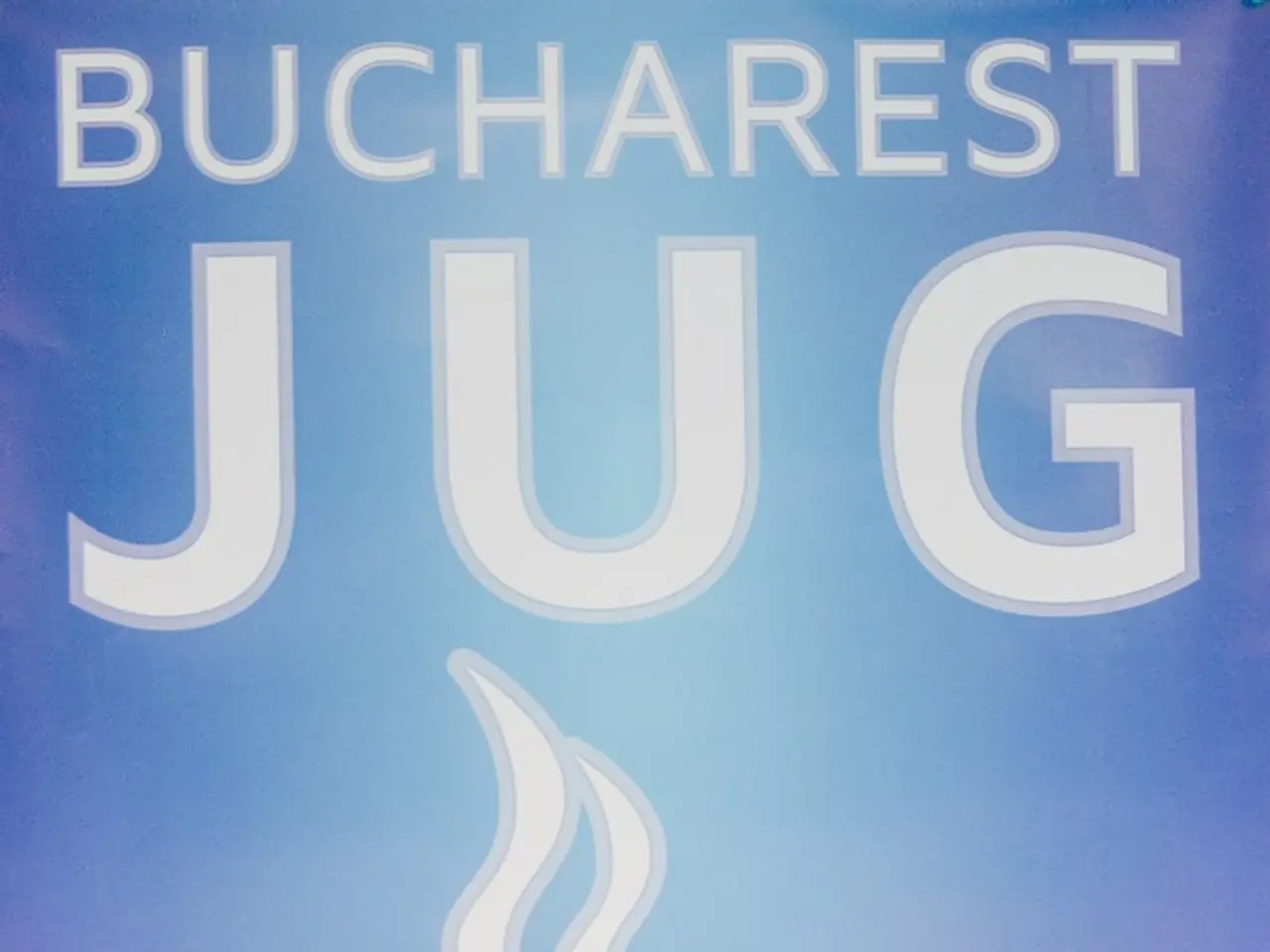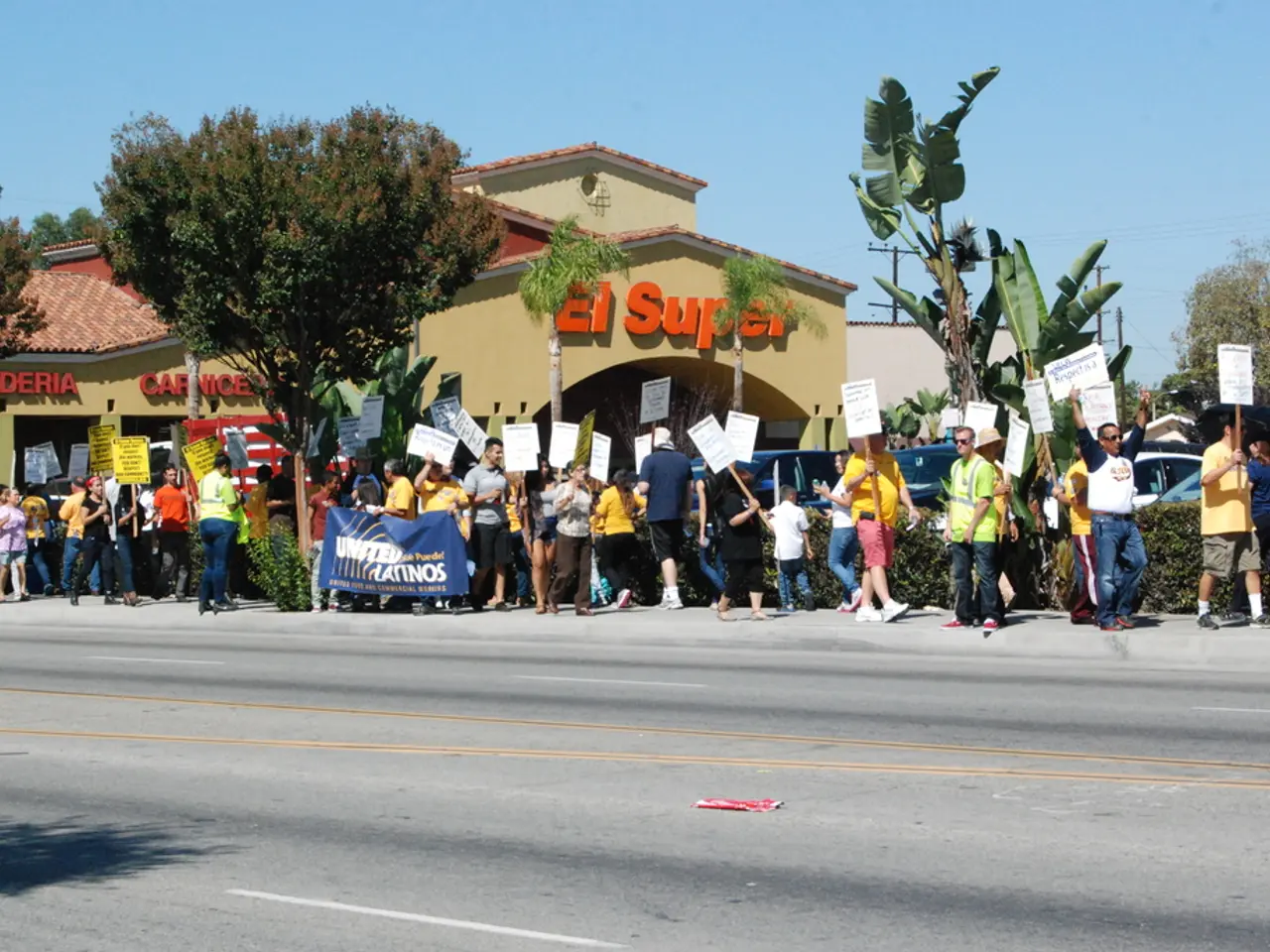Trump's potential advantage in endorsement from labor unions
The revival of labor unions in the United States holds significant potential benefits and challenges for the country's economic renewal, particularly in the current economic climate.
### Potential Benefits
One of the key advantages of a stronger union presence is wage growth and income equality. Historically, unions have raised wages for less-skilled workers, providing a substantial wage premium for these groups compared to non-unionized counterparts. This has helped reduce income inequality, especially during periods of high unionization rates in the mid-20th century. A reinvigorated union movement could help narrow the wage gap and address economic inequality by increasing wages for lower-skilled and minority workers, who stand to benefit most from union representation.
Labor unions also advocate for better workplace safety, fair pay, and decent working conditions. Expanding union influence could strengthen labor standards, which have come under pressure from recent deregulatory efforts aimed at weakening wage and safety protections.
By securing better wages and benefits, unions could boost workers' purchasing power, supporting domestic demand, a key driver of economic growth. Given current signs of slowing job growth and increasing layoffs, particularly in the public sector and in manufacturing due to tariffs, stronger union representation might help sustain consumer spending.
Unions could also provide a counterbalance to tariff-related vulnerabilities by negotiating for fair wages and retraining programs for workers affected by trade disruptions.
### Challenges
However, the revival of unions is not without its challenges. Higher wages and benefits negotiated by unions can increase labor costs for businesses, potentially reducing competitiveness, especially in industries vulnerable to global trade shifts.
U.S. economic growth is forecasted to slow due to tariffs, elevated interest rates, and government employment declines. In this uncertain environment, union-driven wage increases could potentially exacerbate job losses if employers reduce hiring or lay off workers to control costs.
There is political opposition to unions, including legislation designed to weaken union power and administrative deregulatory actions aimed at undercutting worker protections. These factors could impede the revival and effectiveness of unions in influencing economic renewal.
Moreover, the decline in unionization has been accompanied by a shift toward a more skilled, less unionized workforce. Reviving unions would require organizing efforts focused on less-skilled workers, which has been more challenging in recent decades.
In conclusion, reviving labor unions could contribute positively to wage growth, reduce inequality, and enhance worker protections, thereby supporting economic renewal. However, these benefits come amid challenges related to increased labor costs, economic uncertainty, political resistance, and evolving labor market dynamics. Balancing these factors will be crucial for unions to effectively aid the United States' economic recovery and long-term growth.
In the realm of identity politics, some argue that union revival might foster free speech by providing a collective platform for workers to voice their concerns and advocate for their rights in the general-news landscape.
However, in the context of cancel culture, companies could face backlash if they are seen as supporting unions perceived as antagonistic or too radical, potentially affecting their brand reputation and profits.
Moreover, the cultural shift towards a meritocracy, where individual achievements trump collective bargaining, could pose a challenge to the traditional ideology of labor unions, altering the political dynamics surrounding union politics and identity politics in the United States.








